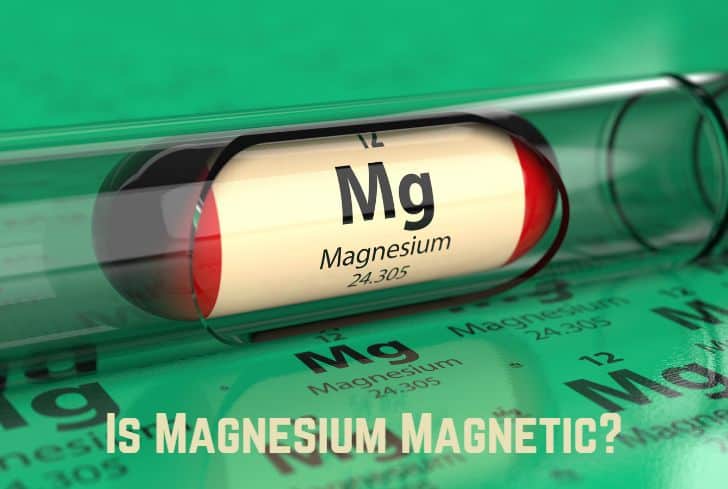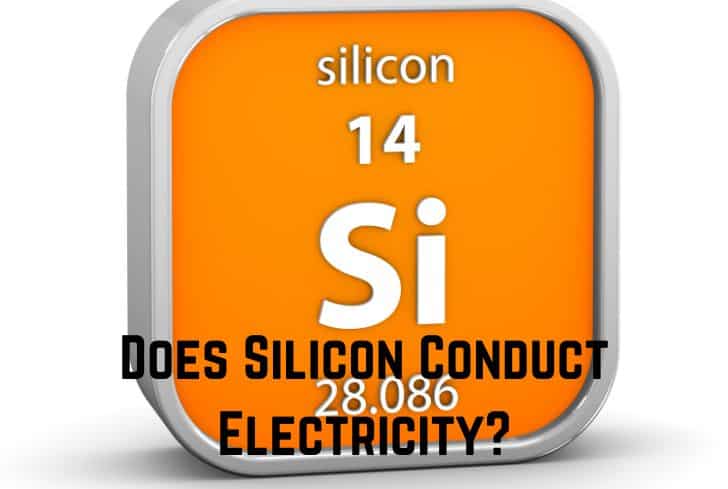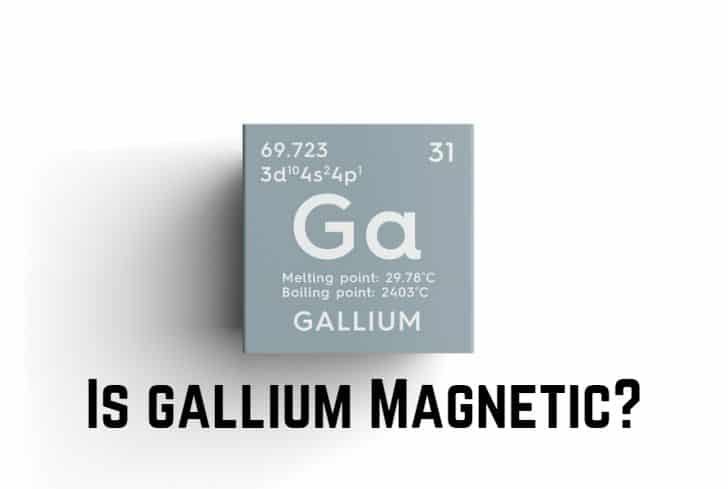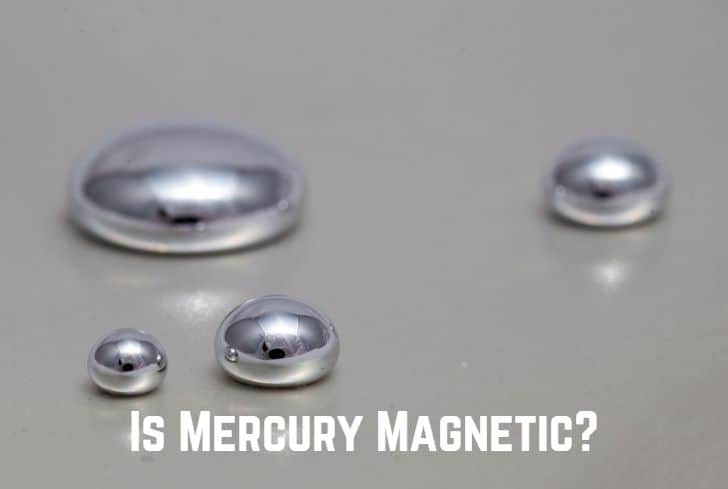Is Magnesium Magnetic? (No Way…)

Magnesium (Mg) is a chemical element with the atomic number 12. It is a shiny gray metal with low density and high strength, which is why it is used in a wide variety of applications. Its name comes from Magnesia, a district of Thessaly (Greece), where magnesia alba was first found.
Have you ever wondered if magnesium is magnetic? In this article, we are going to discuss just that. We will talk about the properties and uses of magnesium. Then we will discuss its magnetic properties, along with those of some of its compounds.
Is Magnesium Magnetic or Non-magnetic?
No, magnesium is not magnetic. To be magnetic, a material has to have free electrons. But magnesium has a completely filled outer electron shell, and therefore, it is not attracted to a magnetic field.
Let us first understand what magnetism is. Magnetism is a force caused by the motion of electric charges. Every substance is made up of atoms. These atoms have electrons (particles that carry an electric charge) that circle the atom’s center, called the nucleus.
In some substances like iron, the electrons spin in the same direction. This allows their magnetic fields to combine, and it produces a magnetic field extending beyond the atoms. These objects are strongly attracted to magnets and are called ferromagnetic.
However, in most substances, equal numbers of electrons spin in opposite directions. This cancels out their magnetism, and they are not attracted to a magnetic field. These include things like cloth, wood, paper, etc., and are called diamagnetic.
The electronic configuration of Magnesium is 1s22s22p63s2. This means that it has two electrons in its outermost s-orbital and six electrons in its outermost p-orbital, which gives it a stable electron configuration. In other words, magnesium’s outer shell is completely filled.
Since there are no free electrons in the outer shell, magnesium is not attracted to magnets. Check out this video by Magnets and Motors to see this in action. The rare earth magnet attracts the iron nails but doesn’t interact with the magnesium metal ribbon.
Is Magnesium Sulfide Magnetic?
No, magnesium sulfide (MgS) is not magnetic. Just like magnesium, sulfur is also a non-magnetic material and their bonding does not result in any magnetism. These elements do not have unpaired electrons in their outer shells and are non-magnetic.
MgS is an inorganic compound consisting of magnesium and sulfide. It is a white, crystalline solid that is insoluble in water and has a characteristic smell. MgS is used in various industrial applications, such as the production of refractory materials, as a catalyst in chemical reactions, etc.
Both magnesium and sulfur have completely filled outer electron shells. Since they do not have unpaired electrons, they are both non-magnetic. Moreover, MgS is an ionic compound, so it does not involve any sharing or exchange of electrons (mechanisms that can allow magnetism).
Therefore, MgS is a diamagnetic material, meaning that it is weakly repelled by a magnetic field.
Is Magnesium Chloride Magnetic?
No, magnesium chloride is not magnetic. Both magnesium and chlorine are non-magnetic materials as they have completely filled outer electron shells. The bonding between them also does not lead to any magnetic behavior.
MgCl2 is an inorganic compound consisting of magnesium and chlorine. It is a colorless, crystalline solid that is highly soluble in water and has a salty taste. MgCl2 is used in the production of magnesium metal, as de-icing agent for roads and sidewalks, etc.
Both magnesium and chlorine have completely filled outer electron shells. So, there are no unpaired electrons that could contribute to their magnetic behavior. MgCl is also an ionic compound, so there is no sharing or exchange of electrons that could allow magnetism.
Therefore, MgCl2 is also a non-magnetic material.
Is Magnesium Stronger Than Steel?
No, magnesium is not stronger than steel. Steel has high strength and durability, which is why it is ideal for structural applications. Magnesium, on the other hand, has much lower strength, even though it has its own uses.
Steel is a widely used alloy made up of iron and other elements, such as carbon, manganese, and silicon. It is known for its high strength, durability, and versatility, making it the perfect choice for a variety of applications. Steel is widely used in construction, manufacturing, and transportation.
Steel is still preferable to magnesium in structural applications. This is because magnesium has a lower fatigue strength (the highest level of stress bearable for a given number of cycles) and ductility. Moreover, steel is also more corrosion-resistant than magnesium.
However, magnesium’s properties do make it incredibly useful in many applications. It has a higher strength-to-weight ratio than steel, meaning that it can provide a similar level of strength while being lighter in weight. Therefore, it is widely used in automotive parts, aerospace components, and other lightweight structures.
Uses of Magnesium
- Structural Metal: Because of its low density and high strength, magnesium is the third-most commonly used structural metal, behind iron and aluminium. It is used mainly used in die-casting, removing sulfur during the production of iron and steel, and the production of titanium. Magnesium is also used in lightweight materials and alloys. When infused when silicon carbide nanoparticles, it has an extremely high specific strength.
- Aircraft & Automotive: Magnesium has historically been the main aerospace construction metal. Germans used it as early as the First World War and then extensively in the Second World War too. Due to fire and corrosion hazards, magnesium is now restricted to engine-related components. Magnesium helps to reduce weight and improve fuel efficiency, and it is also used in automobiles to create structural frames, gearboxes, etc.
- Electronics: Magnesium is widely used in the electronic industry, thanks to its excellent electromagnetic shielding properties. It is often used to make electronic device enclosures, such as casing for laptops, tablets, etc.; magnesium’s heat-dissipating quality also helps here. Magnesium-ion batteries are being developed as a potential alternative to lithium-ion ones. It is also used to make camera bodies and flashlights.
- Chemical Applications: Magnesium produces an intense white light when it burns. Its high combustion temperature makes it useful for starting emergency fires. Magnesium helps to ignite thermite and other materials requiring high ignition temperatures, and it is also used as an incendiary in warfare. Magnesium ribbons help to prepare Grignard reagents. It is also used as a reducing agent to separate uranium from salts.
- Biological Use: Magnesium is essential to all human cells and to hundreds of enzymes. It is the eleventh most abundant element by mass in the human body. Magnesium ions interact with polyphosphate compounds such as ATP, DNA, and RNA. They are necessary for muscle & nerve function while also helping with the maintenance of healthy bones. Magnesium compounds are used medically as laxatives and antacids.
Properties of magnesium
- Occurrence: Like other alkaline earth metals, magnesium occurs only in combination with other elements. It was originally known through compounds such as magnesia alba (oxide) and magnesite (carbonate). Magnesium is the eighth-most abundant element in the Earth’s crust and is found in deposits of magnesite, dolomite, and in mineral waters. It is produced in large stars from the sequential addition of three helium nuclei to a carbon nucleus.
- Physical Properties: Elemental magnesium is a lightweight metal that ranges from gray to white in color. It has two-thirds the density of aluminium, and it is quite brittle, breaking easily along shear bands. Magnesium has the lowest melting (923 K or 650 °C) as well as the lowest boiling point (1,363 K or 1,090 °C) of all the alkaline earth metals. Magnesium has to be combined with other metals like aluminium to become malleable.
- Chemical Behavior: Magnesium reacts readily with air to produce a thin passivation layer of magnesium oxide; this layer protects it from further corrosion, so magnesium doesn’t require an oxygen-free environment, unlike the other alkaline earth metals. In powder form, magnesium reacts with water to produce hydrogen, although it reacts slower than calcium. Magnesium also reacts exothermically with most acids like hydrochloric acid.
- Flammability: Magnesium is highly flammable, especially when it is powdered or shaved into thin strips. Flame temperatures of magnesium and its alloys can reach 5,610 °F (3,100 °C), and these fires are particularly difficult to extinguish because combustion continues in nitrogen, carbon dioxide, and even water. This is why it was used for firebombing during WWII, where the only defense was to smother the flame with sand.
- Light Properties: When burnt in air, magnesium produces a brilliant-white light, which includes strong ultraviolet wavelengths. Magnesium powder was used as flash powder in the early days of photography to illuminate the scene. Later, it was used in single-use photography flashbulbs. Magnesium is now used in military flares, fireworks, and for various other theatrical effects.
Conclusion
In this article, we have discussed the magnetism of magnesium. Because magnesium has a stable electron configuration, it doesn’t have free electrons in its outer shell and is nonmagnetic. But magnesium still has a variety of uses, such as in the aerospace and electronics industry. We also looked at the magnetic properties of some other magnesium compounds.






